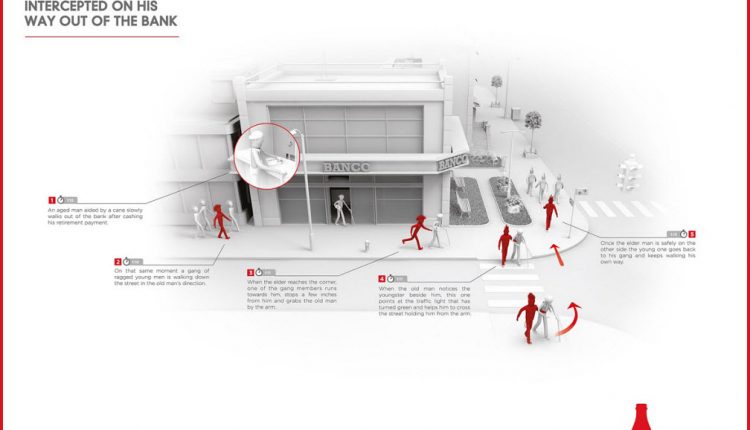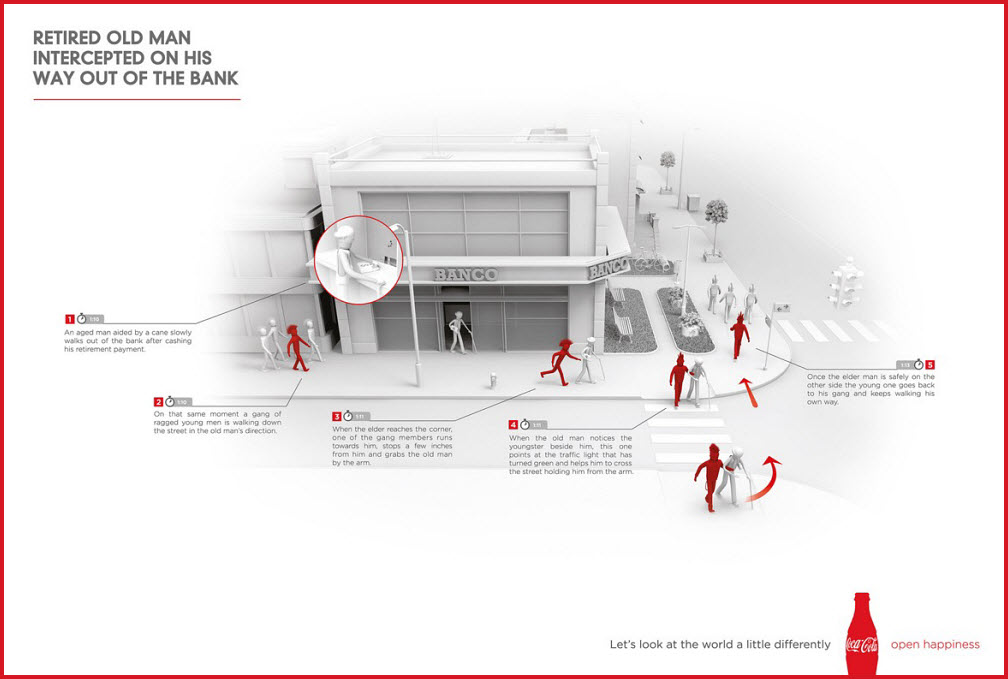When a customer comes to a page or an ad, one of the primary questions asked in their subconscious is, “If I am your ideal customer, why should I buy from you, rather than your competitor?”
The answer to this question is, essentially, your value proposition.
However, what happens when you’ve formed a perfect value proposition, but it’s not giving you the results you wanted? You’ve filled out the worksheets, read all the articles on value proposition and followed all the rules you know. So, how is it that you’ve done everything, seemingly right, but it’s still not working?
For a quick example, let’s imagine for a moment that you’re reading through an online article. As you’re reading, you see the following advertisement on the side of the page with the caption, “Let’s look at the world a little differently.”
When we look at this ad, the first thing we see is the text in all caps; “Retired old man intercepted on his way out of the bank.” Below that is a confusing image of what looks like a diagram, followed by, at the very bottom of the page, what appears to be the value proposition: “Open happiness.”
The customer is left with the question: What can I do here?
Coca-Cola is a well-known, established company with a prevalent product and a value proposition that hardly needs explaining. If you’re familiar with the company, you think of Coke when you read “Open happiness.”
You know the answer to the question “Why open happiness?” must be because it will make you happy, but what will make you happy? Are you trying to sell me a Coke or a different way of seeing the world?
Remember, customers are asking, “What can I do here?” You have to provide them with a simple, obvious answer.
Flint McGlaughlin, Managing Director and CEO, MECLABS Institute, answers this question in his book, The Marketer as Philosopher, under Reflection 25:
The value proposition, as important as it is, has no value if it is delivered too early in the thought sequence.
When we, as marketers, reveal our value proposition too soon, we create friction in the mind of the customer, and in order to reduce that friction, we have to answer three questions in their thought sequence in the proper order:
- “Where am I?”
- “What can I do here?”
- “Why should I do it?”
Delivering your value proposition too early is like if a man in a bar walked up to me and said, “Hi, I am the most attractive man in this bar. I make six figures a year and own a Lamborghini. Will you marry me?”
I don’t know about you, but I would simply get up and walk away. I don’t care how wonderful he claims he is, it’s way too soon to ask such a big commitment from me. In the same way, you have to consider who your customer is and then determine the proper time to introduce the value proposition, or “proposal” if you will.
The ‘what’ must precede the ‘why.’
— Flint McGlaughlin, The Marketer as Philosopher (Reflection 25)
If you neglect to follow this sequence, your value proposition will lose its value, and it will simply become a proposition that your customer isn’t connected to. However, more importantly, your customer will be unable to answer the question, “What can I do here?”
You might also like
Value Proposition: How do you create an effective value prop? [More from the blogs]
Value Proposition: A simple spreadsheet to help you categorize your products’ value [More from the blogs]
Discovering Your Value Proposition: 6 ways to stand out in a crowded marketplace [MarketingExperiments Web clinic replay]




